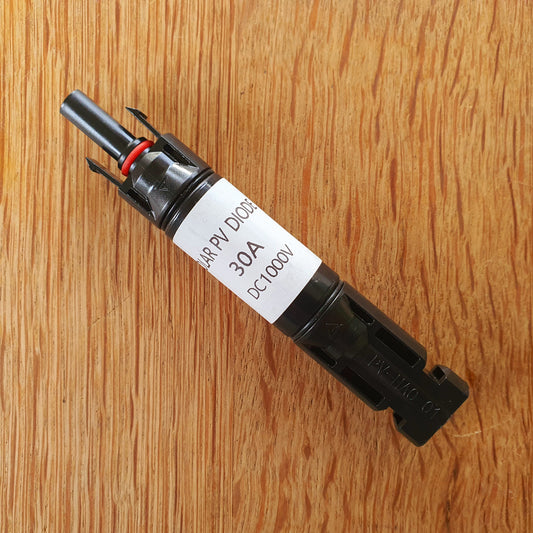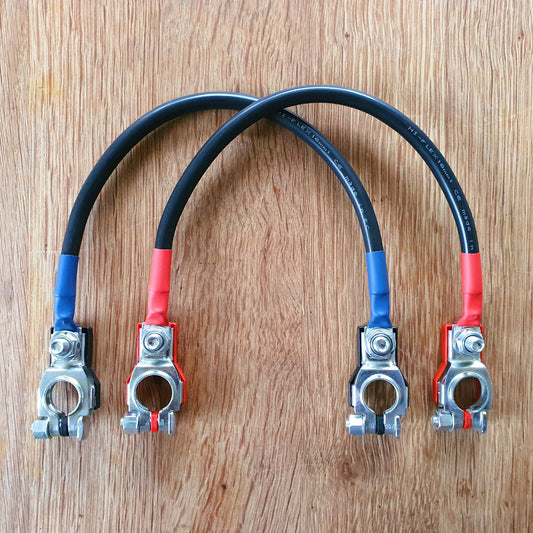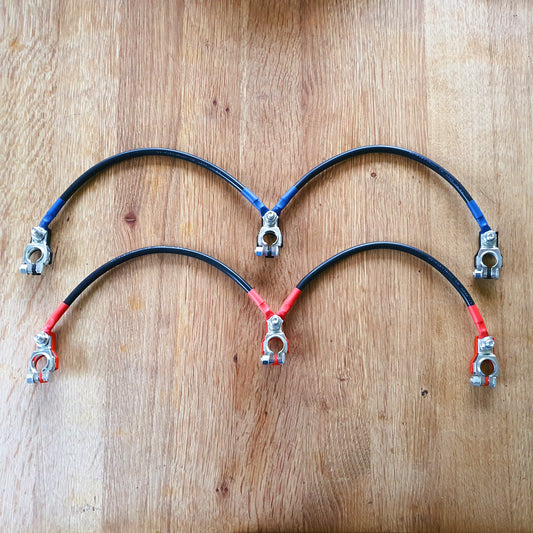
Finding The Correct Size Battery Cables
Share
By far the most common question I get asked by my community when discussing off-grid setups is, what size power cable do I need to connect my leisure batteries together? Naturally, every off-grid setup is different so there is no one size fits all answer to this question. However, there are always two factors I consider when discussing power cables that might help you make a decision.
Location and Layout
The first factor to consider is cable length. The length of your cables will highly depend on the physical location of your leisure batteries, as well as any equipment you intend to connect to them. It is therefore important to visualise your intended layout beforehand, so you can understand how your cables will be routed. It may also be valuable to sketch the location of any conduits, bulkheads, and potential obstacles that need navigating, as well as measuring any distances, in order to plan your cable runs, and calculate any required lengths accordingly.
It is also considered best practice to keep your power cables short where possible, and avoid any inefficiencies caused by minor resistances in the conductor. In this regard, you may consider keeping your batteries closer together where possible, and your most energy intensive devices nearby. It is more acceptable for lower power devices such as light fixtures and USB hubs to have longer cable runs as any inefficiencies will be a lot less significant.
I understand that the perfect layout is hard to come by, I’ve experienced that myself, and I have therefore designed the range of cables available at Kickstart Kamper to accommodate the many different types of cable runs that you may need. This includes any leisure battery connection cables, generic power cables, as well as the range of solar and charge controller cables seen below.
Components and Current
The second factor to consider is cable width/gauge. Understanding the gauge of cable that you will need in your off-grid power setup is very important for both efficiency and safety. The thicker the cable, the lower the resistance, and the more electrical current it can handle before getting too warm and thereby mitigating any risk of it becoming a fire hazard.
The gauge of cable you need therefore, will depend on the maximum electrical current you expect to be drawn from, or put into, your batteries at any one time. It is therefore worth understanding what devices you will have connected to your batteries, and calculating the sum of their maximum rated current draw. These devices could include, fridges, water pumps, light fixtures and heating systems, as well as input devices such as solar charge controllers, all of which should have some indication of their maximum current capabilities. Different size cables will have different maximum current ratings, for example the Kickstart Kamper 16mm cables have a rating of 110 amps, whereas the 25mm cables have a rating of 170 amps.
It is also very important to understand the different between amps and amp-hours when designing off-grid systems, amps are a unit of electrical current, whereas amp-hours are a measure of battery storage capacity. For example, if you have a 100Ah (amp-hour) battery it does not necessarily mean you need a 100A (amp) rated cable, you may need a lot more or a lot less depending on what is connected to it. Your leisure batteries will also have a manufacturer recommended maximum current rating, aimed to prolonging the service life of the battery and which is proportional to the size of the battery. As a general rule for lead-acid batteries, the maximum rated current is often similar to the battery capacity so for a 100Ah battery it would not be unusual for the maximum current to be 100A.
Obviously, I always recommended reading the manuals and datasheets of each device connected to your system so you can gauge your batteries and cables appropriately but if you are unsure in any way, please do consult with a qualified electrician to maximise safety above all else.



